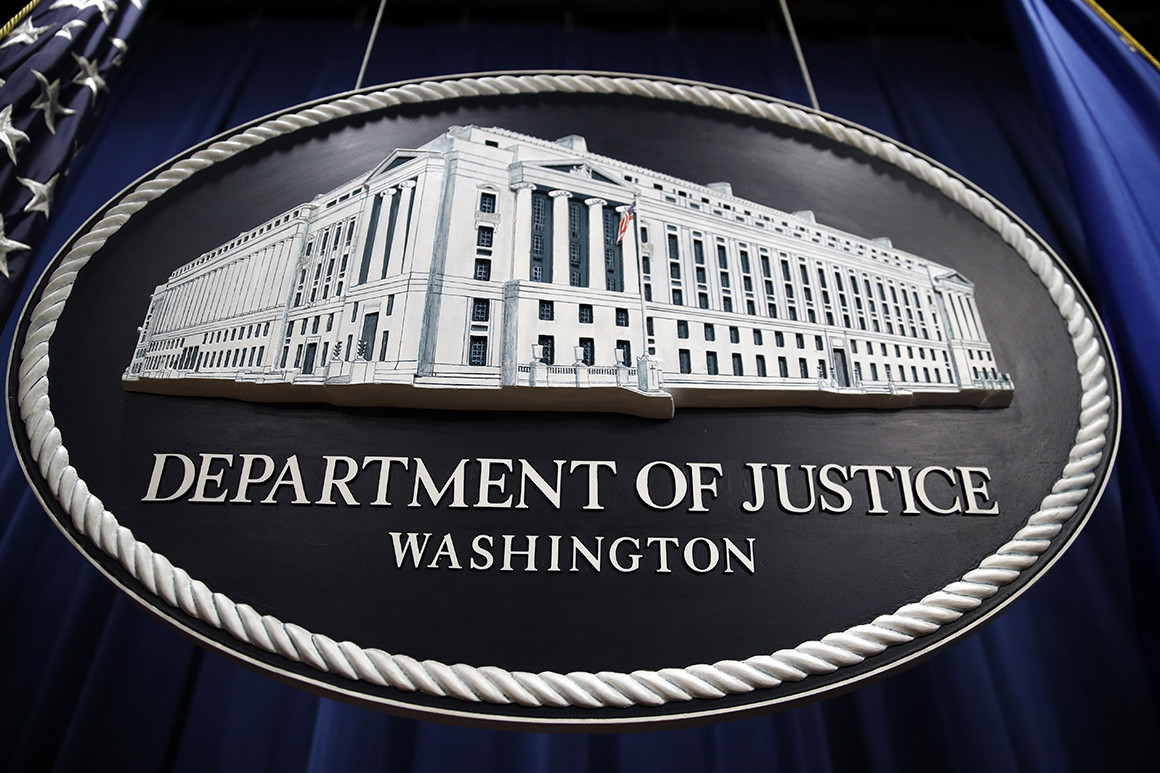THE U.S. Department of Justice, on behalf of the Environmental Protection Agency, is asking the District Court for the NMI to override the temporary restraining order and preliminary injunction issued by the CNMI Superior Court to a contractor so that the Commonwealth Utilities Corporation can procure a crucial wastewater treatment plant clarifier.
The federal court has the power under the Supremacy Clause of the U.S. Constitution to override the local court’s order, added the USDOJ.
CUC and the CNMI government, through the Office of the Attorney General have joined the USDOJ in its request to the federal court.
Background
CUC owns and operates the Sadog Tasi wastewater treatment plant or WWTP, which discharges treated sewage into the Philippine Sea via the Saipan Lagoon Outfall and the Tanapag Harbor.
EPA issued CUC a National Pollution Discharge Elimination System or NPDES permit for the Sadog Tasi WWTP, effective May 1, 2017, that authorizes its discharges, but subject to multiple conditions and effluent limits to ensure the sewage is properly treated.
Two of the indices of treatment performance in the permit are Total Suspended Solids or TSS, a measure of the solids content, and Biochemical Oxygen Demand or BOD, a measure of the organic content remaining in treated sewage.
Excess concentrations of TSS and BOD indicate that that sewage has not adequately been treated and may have detrimental impacts on the health of a waterbody and individuals who come in to contact with that waterbody.
One of the primary components of a WWTP is the clarifier. The clarifier reduces the content of suspended solids and particulate matter in sewage after it has been aerated. A clarifier generally consists of a tank with a sloped bottom, and a mechanism to rake the sludge solids into a sump and then to pump out the accumulated sludge solids.
The Sadog Tasi WWTP has one circular clarifier that all aerated sewage must pass through for treatment and removal of solids sludge.
In October 2018, a typhoon damaged the mechanical components of the Sadog Tasi WWTP clarifier and since then it has not functioned properly.
Since the 2018 typhoon, the Sadog Tasi WWTP has violated its effluent limits every month through present, with a total of 214 exceedances of pollutant effluent limitations. Many of these exceedances are directly caused by the poorly functioning clarifier.
In particular, during this time period, Sadog Tasi has violated its permit limits for BOD, TSS and enterococci.
Enterococci are indicators of the presence of fecal matter in water and therefore of the possible presence of disease-causing bacteria, viruses and protozoa. These pathogens can sicken swimmers and others who use the waterbody.
In August 2020, the Sadog Tasi WWTP operators improvised an emergency system of temporary pumps, PVC piping, and manual labor to rake the clarifier and remove accumulated sludge solids from the clarifier.
These measures have posed health and safety risks to the WWTP operators due to the manual labor required and unsafe conditions at the clarifier to implement the temporary improvised system.
This temporary system has significantly reduced the number of effluent violations. While operators have been able to remove an appreciable volume of sludge solids buildup in the clarifier through the temporary improvised system, these interim measures are not sustainable and it is highly likely that violation of permit limits will increase without clarifier replacement.
The USDOJ noted that in particular, the Sadog Tasi WWTP treats sewage from many of the island’s hotels.
Consequently, the risks of increased effluent violations are likely to increase as wastewater volume increases due to the resumption of tourism as Covid-19 travel restrictions recede and direct flights to Saipan from Tokyo commence.
The failure of CUC to replace the clarifier, and effluent violations caused by the clarifier problems, violate Section 301 of the Clean Water Act.
CUC’s efforts
Over the last three years, CUC issued four invitations to bid on the clarifier replacement.
CUC cancelled the first three invitations after bids were received because the lowest bidder was unqualified and the next lowest bid was over budget.
USA Fanter Co. Ltd. was not awarded the contract in the first three bid proceedings because its bid, the lowest qualified bid, was over budget.
USA Fanter filed protests with the Office of the Public Auditor under CNMI regulations over the second and third bid cancellations which were consolidated. (Order Granting Preliminary Injunction, USA Fanter Corp. v. Commonwealth Utilities Corporation, USA Fanter Corporation, No. 22-0143 at 1 Sup. Ct. CNMI July 19, 2022).
Before the consolidated appeals were resolved, the CNMI Supreme Court issued a decision in another matter determining that the Office of the Public Auditor did not have the authority to decide CUC’s contracting appeals.
CUC thereafter amended its procurement regulations through emergency regulations replacing the OPA with the Board of Directors’ Standing Committee for Appeals.
USA Fanter’s consolidated appeals were subsequently remanded to CUC for resolution. However, the Committee for Appeals is presently unable to review USA Fanter’s protest because it does not have enough members to constitute a quorum.
On June 17, 2022, CUC invited bids for the fourth time on the clarifier replacement, and required bid submission by July 7, 2022.
USA Fanter did not seek to stay CUC’s new request and in fact submitted a bid in response to the invitation.
CUC received four bids in response to the solicitation, two of which were under budget.
On July 7, 2022, USA Fanter filed a complaint in the CNMI Superior Court requesting a temporary restraining order and preliminary injunction restraining CUC from awarding the clarifier replacement contract while its bid protest was unresolved.
The Superior Court issued the TRO on July 8, 2022, and on July 15, 2022, issued a 30-day preliminary injunction.
The Superior Court ordered additional briefing and a hearing scheduled for August 19 on whether the preliminary injunction should be extended.
Stipulated orders
In Nov. 2008, after the Environmental Protection Agency cited CUC for violating the Clean Water Act and the Safe Drinking Water Act, the federal court issued Stipulated Orders 1 and 2.
SO1 focuses on drinking water issues while SO2 focuses on oil issues such as requiring CUC to repair and replace oil storage and operation infrastructure, manage tank and pipeline facilities, and require spill and emergency response equipment and protocols.
On July 22, 2022, after the CNMI Superior Court issued the preliminary injunction barring CUC from awarding a contract to replace the Sadog Tasi clarifier, the USDOJ and CUC jointly requested that the federal court issue a stipulated order requiring CUC to award a contract for the clarifier by Sept. 16, 2022, and providing that in doing so CUC is not required to follow local contracting requirements
Designated Federal Judge David O. Carter on the same day held a telephonic hearing on the original proposed stipulated order.
Following the hearing, Judge Carter set another hearing date for August 5, 2022, and ordered CUC to provide USA Fanter and the CNMI Superior Court with the proposed stipulated order and invite them to file briefs and participate in the August 5 hearing.
USDOJ attorney Elizabeth Loeb said the supremacy clause of the U.S. Constitution authorizes the amended stipulated order.
In this case, Loeb said, the facts underlying the proposed amended stipulated order support applying both of these strands of conflict preemption.
“The [Clean Water Act or] CWA, a federal statute, requires CUC to comply with its [National Pollutant Discharge Elimination System or] NPDES permit and properly operate and maintain its treatment facilities. However, the Superior Court’s preliminary injunction, which presumably applies CNMI public contract law, prohibits CUC from taking a measure that is necessary to comply with the CWA, replacing the Sadog Tasi clarifier. As a result, CUC cannot comply with both the Superior Court preliminary injunction and the CWA; compliance with the state law requires violation of federal law and vice versa,” Loeb said.
“This is the quintessential example of impossibility-based preemption,” she added.
Loeb said “not only is it impossible for CUC to comply with both the Superior Court preliminary injunction and the CWA, but the Superior Court preliminary injunction stands as an obstacle to the accomplishment and execution of the full purposes and objectives of the CWA.”
She said the “longer CUC complies with the preliminary injunction (which could be extended for an undefined period of time) and refrains from contracting for the clarifier replacement, the greater the risk and duration of harm from its discharges to the public health and environment.”
This “thwarts the purpose of the CWA which is to ‘restore and maintain the chemical, physical and biological integrity of the Nation’s waters.’ ”
Loeb said the CNMI public contract law as applied through the Superior Court’s preliminary injunction, is “akin to creating a contract-protest exemption to CWA compliance, thereby curtailing the statutory breadth Congress determined was necessary for the CWA to meet its objective.”
“The Ninth Circuit has explicitly rejected the notion that states can create exemptions and limitations to CWA requirements,” Loeb added.










